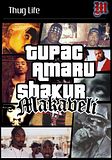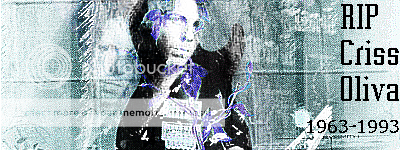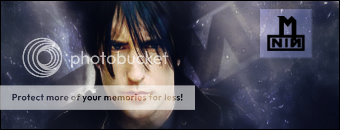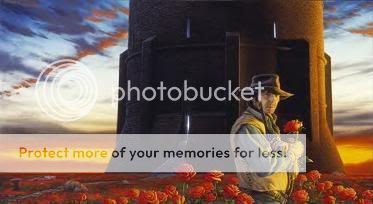The GIMP FAQ
The GIMP FAQ
0
posted08/31/2011 02:41 AM (UTC)byGreetings,
It has come to my attention that there aren't many threads dedicated to users who use GIMP so I decided to start a thread for users to help understand the Program better. There will also be tutorials as well as how to install brushes. If there is anything else you would like to add to this thread, please do not hesitate to PM me as I will edit this post and give you credit for it. As you all know, I am a former PhotoShop user until my computer died ( Very Lame >.> ). It was DragonEnergy who introduced me to GIMP and since then, I have improved my Sig Making in the program. Other GIMP users can feel free to answer questions for the beginners and be awarded DPs. My objective was to bring together the GIMP users on this site, as there are quite a few here, and reach out to them in their need.
If you're interested in downloading GIMP, Click Here
The Following links are helpful tutorial sites found on Google:
Tutorials on GIMP site
GUG Tutorials
GIMP Talk Tutorials
Tutorials Made by MKO users:
owen_pwned's GIMP Brushes Tutorial - Credit to owen_pwned
Dragonblade's Sig Tutorial - Credit to Dragonblade
Glowing Scratch Tutorial by Cosmos - Credit to Cosmos
Background Tutorial - by MKombatouttahell
Pallette Swapping Tutorial by thedogpound
---------------------------------------------------------------------------------------------------------
All My GIMP Brushes were found on DeviantArt using their search feature. If anyone has a site that they would like to add to this FAQ, PM me and I will link it and give you credit
GIMP Brushes on DeviantArt
---------------------------------------------------------------------------------------------------------
How to install Brushes
Okay, so I was asked this yesterday on how to install brushes and if I remember correctly when I was a noob at GIMP, I didn't even know how to install brushes until DE showed me through PM lolz. Here you will find a list of 7 steps, all screencapped on how to install brushes*:
Step 1 - Right-Click on the GIMP icon on your desktop and click on Properties
STep 2 - Click "Find Target"
Step 3 - Click GIMP-2.0 on the left side.
Step 4 - Click on the folder called Share
Step 5 - Click on the folder called GIMP
Step 6 - Click on the folder 2.0
Step 7 - Click on the Brushes folder
* Please make sure that before doing any of these steps that you DOWNLOAD and EXTRACT the files first before performing any of these steps. The steps included are for Windows XP. I don't how it's done for any other system.
How to install brushes from the Nintendo Board - Thanks owen_pwned
-------------------------------------------------------------------------------------------------------
Well I hope this was at least slightly helpful to any of the new users of GIMP. This post is subject to change at all times as new stuff (Hopefully) will be edited on here.
It has come to my attention that there aren't many threads dedicated to users who use GIMP so I decided to start a thread for users to help understand the Program better. There will also be tutorials as well as how to install brushes. If there is anything else you would like to add to this thread, please do not hesitate to PM me as I will edit this post and give you credit for it. As you all know, I am a former PhotoShop user until my computer died ( Very Lame >.> ). It was DragonEnergy who introduced me to GIMP and since then, I have improved my Sig Making in the program. Other GIMP users can feel free to answer questions for the beginners and be awarded DPs. My objective was to bring together the GIMP users on this site, as there are quite a few here, and reach out to them in their need.
If you're interested in downloading GIMP, Click Here
The Following links are helpful tutorial sites found on Google:
Tutorials on GIMP site
GUG Tutorials
GIMP Talk Tutorials
Tutorials Made by MKO users:
owen_pwned's GIMP Brushes Tutorial - Credit to owen_pwned
Dragonblade's Sig Tutorial - Credit to Dragonblade
Glowing Scratch Tutorial by Cosmos - Credit to Cosmos
Background Tutorial - by MKombatouttahell
Pallette Swapping Tutorial by thedogpound
---------------------------------------------------------------------------------------------------------
All My GIMP Brushes were found on DeviantArt using their search feature. If anyone has a site that they would like to add to this FAQ, PM me and I will link it and give you credit
GIMP Brushes on DeviantArt
---------------------------------------------------------------------------------------------------------
How to install Brushes
Okay, so I was asked this yesterday on how to install brushes and if I remember correctly when I was a noob at GIMP, I didn't even know how to install brushes until DE showed me through PM lolz. Here you will find a list of 7 steps, all screencapped on how to install brushes*:
Step 1 - Right-Click on the GIMP icon on your desktop and click on Properties
STep 2 - Click "Find Target"
Step 3 - Click GIMP-2.0 on the left side.
Step 4 - Click on the folder called Share
Step 5 - Click on the folder called GIMP
Step 6 - Click on the folder 2.0
Step 7 - Click on the Brushes folder
* Please make sure that before doing any of these steps that you DOWNLOAD and EXTRACT the files first before performing any of these steps. The steps included are for Windows XP. I don't how it's done for any other system.
How to install brushes from the Nintendo Board - Thanks owen_pwned
-------------------------------------------------------------------------------------------------------
Well I hope this was at least slightly helpful to any of the new users of GIMP. This post is subject to change at all times as new stuff (Hopefully) will be edited on here.


About Me

0
Nice thread MB...
Here is the nintendo board version of the brushes download.
Go to deviant art.com and in the search feature look for grunge brushes
" rel="noopener noreferrer nofollow">http://forums.nintendo.com/nintendo/board/message?board.id=techsupport&message.id;=412824&query.id;=0#M412824
Here is the nintendo board version of the brushes download.
Go to deviant art.com and in the search feature look for grunge brushes
" rel="noopener noreferrer nofollow">http://forums.nintendo.com/nintendo/board/message?board.id=techsupport&message.id;=412824&query.id;=0#M412824


About Me

 Shout out to sbdjuggalos he's the coolest dude.
Shout out to sbdjuggalos he's the coolest dude.
0
How do you get New fonts to the GIMP?
About Me

0
there's one site i remember, i think its called
www.1000 free fonts.com
thats probably not it
www.1000 free fonts.com
thats probably not it
0
Excellent Thread...this will be of great use to me. Thanks!!
-Ryan C.
-Ryan C.
About Me

0
Shinnok-fan64 Wrote:
there's one site i remember, i think its called
www.1000 free fonts.com
thats probably not it
there's one site i remember, i think its called
www.1000 free fonts.com
thats probably not it
It's 1001freefonts.com. your thinking of.
Thedogpound Wrote:How do you get New fonts to the GIMP?
You don't get fonts for GIMP, you have to download new fonts to your font folder. Your font folder should be located in your control panel. Once the fonts are downloaded to there, then you can use the fonts in GIMP and as well as in other programs.


About Me

 Shout out to sbdjuggalos he's the coolest dude.
Shout out to sbdjuggalos he's the coolest dude.
0
Where is the fonts file?
0
Thedogpound Wrote:
Where is the fonts file?
Where is the fonts file?
Control Panel --> Fonts
I just save to the desktop, then cut and paste.


About Me

0
Just put the dowloaded file onto your desktop open up your fonts file in control panel and drag the font on your desktop into the folder...Then you can delete the font of your desktop.


About Me

 Shout out to sbdjuggalos he's the coolest dude.
Shout out to sbdjuggalos he's the coolest dude.
0
Yay1 i finnaly got it. Thanks evreyone.


About Me

0
Kombosus Wrote:
I am having some troubles with the layers. Basically what I want to do is have a bottom layer I can colour on without colouring over the outlines on the top kayer. Anyone know what to do about this?
I am having some troubles with the layers. Basically what I want to do is have a bottom layer I can colour on without colouring over the outlines on the top kayer. Anyone know what to do about this?
I don't get what you mean
I want 2 layers one being the bottom the other being the top on the top layer I want my sketch outlines. On the bottom layer is where I want to do the colouring THROUGH the top layer so I can see my sketch on the top while im colouring the bottom and the colouring doesnt effect the sketch except for the fact that it looks coloured.
About Me
My tastes have changed since I created this account over 4 years ago. I prefer being called Siklootd and now love heavy metal music. 

0
Kombosus Wrote:
I want 2 layers one being the bottom the other being the top on the top layer I want my sketch outlines. On the bottom layer is where I want to do the colouring THROUGH the top layer so I can see my sketch on the top while im colouring the bottom and the colouring doesnt effect the sketch except for the fact that it looks coloured.
I want 2 layers one being the bottom the other being the top on the top layer I want my sketch outlines. On the bottom layer is where I want to do the colouring THROUGH the top layer so I can see my sketch on the top while im colouring the bottom and the colouring doesnt effect the sketch except for the fact that it looks coloured.
First paste the image that you want to be on the bottom layer, then Click "Layer" then "New Layer". And make sure you set it's property to have a transparent background. Now you can fool around with the top layer. If you want to go back and change the properties of the bottom layer, just bring up the layer dialog box by going to the main GIMP toolbox and click "File" and then "Dialogs" this will bring up the layer toolbox. Here you can change what layer you're working on by clicking the layer, you can also change the attributes by using the opacity bar and the actual properties which are listed in the drag down box just above the opacity bar. Fool around with the different layer properties for the top layer in order to make it blend and match better with the bottom layer by changing the default setting of "Normal" to anything that you think looks good.
To do what you're asking you'll have to do it like this, I think it will work:
Create a new file and then create two layers immediately. Paste your outline to the top layer by selecting the top layer via the layer toolbox. Now select the bottom layer by using the layer toolbox and simply clicking the layer that is on the bottom. This means that you are working with the bottom layer, even thought the top layer is the visible layer. Now you can color through to the bottom layer without destroying the way the top layer looks! But, you probably won't be able to see the coloring that you did to the image since the coloring will be on the bottom. So you might want to also try the following:
Put the outlines/sketch on a bottom layer, and then create a new layer. Select the top layer by using the layer toolbox and then start color the sketch, this will only affect the top layer, and the bottom layer will still contain the outlines that you placed on it!
About Me
My tastes have changed since I created this account over 4 years ago. I prefer being called Siklootd and now love heavy metal music. 

0
Alright, after viewing that tutorial and trying it out for myself with their given image, here's my explanation as to how you do it, I tried to explain it in as much detail as possible:
Step 1: First open a new blank document and make sure that the dimensions you pick for it are large enough for the sketch you're going to add to it later and make it fill type white. Now click, "Layer" and then "New Layer" and choose "layer fill type" white.
Step 2: Bring up your layer toolbox by going to the main GIMP toolbox and choose "Dialogs" then choose "Layers". Choose the top layer and now paste/add your sketch to that layer.
Step 3: Now return to the layer toolbox. Select the layer that contains the sketch (the top layer). Where it says "Mode" there is a drag down box. Change this to "Multiply" in order to make the image somewhat transparent.
Step 4: The bottom layer can be used for all of the coloring, or you can continue to add new layers to the sketch by going to the layer toolbox and choosing the little piece of paper looking icon (the bottom left icon), and then choose to set the properties for this layer to "Multiply" as well or else you won't be able to see the bottom layers. Make sure that the sketch is always the top layer, if another layer is higher than it, then use the little arrows on the layer toolbox to move the layers either up or down as you may deem necessary.
Step 5: In order to actually color the image, first make sure you have enough layers for all of the coloring you're going to do (and once again remember to set their mode to "Multiply" all layers except for the very bottom one must be set to this). To color each layer, return to your layer toolbox and click on the layer you want to work with, for example click "background" this means that this is your selected layer, so whatever you do to the image will only affect the selected layer.
Step 6: Continue to choose the layer you're going to work with via the layer toolbox, and continue to add as many layers as needed but set to "Multiply". As long as you continue to choose what layer to work with before coloring, you can continue to color the image and have the top layer represent your sketch.
Step 1: First open a new blank document and make sure that the dimensions you pick for it are large enough for the sketch you're going to add to it later and make it fill type white. Now click, "Layer" and then "New Layer" and choose "layer fill type" white.
Step 2: Bring up your layer toolbox by going to the main GIMP toolbox and choose "Dialogs" then choose "Layers". Choose the top layer and now paste/add your sketch to that layer.
Step 3: Now return to the layer toolbox. Select the layer that contains the sketch (the top layer). Where it says "Mode" there is a drag down box. Change this to "Multiply" in order to make the image somewhat transparent.
Step 4: The bottom layer can be used for all of the coloring, or you can continue to add new layers to the sketch by going to the layer toolbox and choosing the little piece of paper looking icon (the bottom left icon), and then choose to set the properties for this layer to "Multiply" as well or else you won't be able to see the bottom layers. Make sure that the sketch is always the top layer, if another layer is higher than it, then use the little arrows on the layer toolbox to move the layers either up or down as you may deem necessary.
Step 5: In order to actually color the image, first make sure you have enough layers for all of the coloring you're going to do (and once again remember to set their mode to "Multiply" all layers except for the very bottom one must be set to this). To color each layer, return to your layer toolbox and click on the layer you want to work with, for example click "background" this means that this is your selected layer, so whatever you do to the image will only affect the selected layer.
Step 6: Continue to choose the layer you're going to work with via the layer toolbox, and continue to add as many layers as needed but set to "Multiply". As long as you continue to choose what layer to work with before coloring, you can continue to color the image and have the top layer represent your sketch.
About Me
My tastes have changed since I created this account over 4 years ago. I prefer being called Siklootd and now love heavy metal music. 

0
I think that this is what you're talking about, I hope it helps because I'm pretty sure that's what you meant:

And then you change it to any of the available sizes that are viewable through this drag down box. I'm also pretty sure that some brushes have a size that can't be changed, like some of the special brushes can't be made smaller. But most of the special brushes that I have do have alternate size choices via this menu.
And KARATE this part of my post is to help you with editing sigs after you've already made them. Like I said before, if you already save your GIMP image as either a JPEG or GIF and then close down the original image, you can no longer go back to edit its layers because it flattens the image into one layer so you can no longer go back and change the way the image looks. So here's what you do everytime you create something on GIMP that you think you might need to go back and fix:
1. Finish making your sig and make sure it still has layers (check via the layer toolbox).
2. As long as it has layers this means you'll be able to go back and edit it later after saving it the special way that I'm about to say, so you must have some layers on the image.
3. Go to "Save As" and give it some kind of file name like "Mysig".
4. You now type .xcf in order to give it the GIMP file extension.
5. Now it has saved your image and remembered your layers so that you can go back to the sig and fix it up later if someone tells you to. When you're done with the sig feel free to save it as a JPG or GIF so that the user can actually use the image as a sig, but it's very wise to always keep a file of each sig you make as an .xcf just in case the user wants you to fix anything on it .

And then you change it to any of the available sizes that are viewable through this drag down box. I'm also pretty sure that some brushes have a size that can't be changed, like some of the special brushes can't be made smaller. But most of the special brushes that I have do have alternate size choices via this menu.
And KARATE this part of my post is to help you with editing sigs after you've already made them. Like I said before, if you already save your GIMP image as either a JPEG or GIF and then close down the original image, you can no longer go back to edit its layers because it flattens the image into one layer so you can no longer go back and change the way the image looks. So here's what you do everytime you create something on GIMP that you think you might need to go back and fix:
1. Finish making your sig and make sure it still has layers (check via the layer toolbox).
2. As long as it has layers this means you'll be able to go back and edit it later after saving it the special way that I'm about to say, so you must have some layers on the image.
3. Go to "Save As" and give it some kind of file name like "Mysig".
4. You now type .xcf in order to give it the GIMP file extension.
5. Now it has saved your image and remembered your layers so that you can go back to the sig and fix it up later if someone tells you to. When you're done with the sig feel free to save it as a JPG or GIF so that the user can actually use the image as a sig, but it's very wise to always keep a file of each sig you make as an .xcf just in case the user wants you to fix anything on it .
I just got GIMP and its a little overwhelming. My question is, when i copy and paste a sprite to the gimp, theres a white box that always surrounds the sprite and runes it when i try and place the sprite on an arena pic for a fake. How can i make the sprite stand alone with nothing surrounding it? Is there a way to cut the sprite out specifically? Please help.


About Me

 Shout out to sbdjuggalos he's the coolest dude.
Shout out to sbdjuggalos he's the coolest dude.
0
How do you make it so you take out a face of someone like this.


© 1998-2025 Shadow Knight Media, LLC. All rights reserved. Mortal Kombat, the dragon logo and all character names are trademarks and copyright of Warner Bros. Entertainment Inc.









